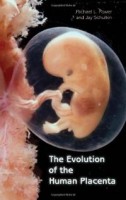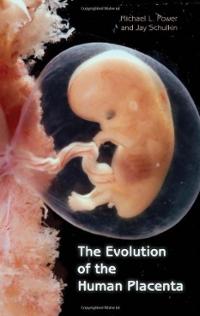 Authors: Michael L. Power and Jay Schulkin
Authors: Michael L. Power and Jay Schulkin
Publisher: Johns Hopkins University Press – 266 pages
Book Review by: Nano Khilnani
Not known to most, the placenta – a fundamental organ in human reproduction described by the authors as the “most intimate connection between a mother and her growing fetus” – has evolved for a long, long period – more than a hundred million years.
In this unusual book written not just for obstetricians but for laymen as well – like most of you and me – Michael L. Power and Jay Schulkin trace the development of this organ through the millennia in the earliest mammals on earth to the human placenta today, with it varied features. It is in essence a study of gestation and placental evolutionary biology.
This book has five basic themes:
- The placenta as a regulatory organ
- The co-option of the immune system to become a regulatory in early gestation
- The evolution of genetic regulatory mechanisms due to selective forces enabled by the existence of the placenta
- The biological anthropology of the placenta
- The biomedical aspects of the placenta that relate to the previous four themes
You will discover in this book written in plain English that the human placenta does not only connect a baby to its mother in a physical way but also in terms of metabolism and immunology. And, contrary to what most of us had assumed (including myself), it is made up of fetal cells; it is not an organ made by the mother.
The placenta is also unique in that it is the only part of the human body that is linked between two beings (except conjoined twins). And after the birth of the infant, the placenta sort of disintegrates. “It orchestrates its own death,” the authors write.
All of these surprising facts mentioned above make this book a fascinating read. Additionally, Power and Schulkin point out the following – we quote their words:
- Mothers and babies are “speaking” to each other at a fundamental biological level from the moment of the implantation.
- The intrauterine environment has been shown to have a strong influence over growth and development and to have significant effects on the future health and well-being of offspring long after birth
- The close connection between a mother and its offspring has influenced multiple aspects of mammalian biology, especially in the realm of biological regulation, from metabolism to the genome.
- Many of the pathologies and poor outcomes of human pregnancy are, at their core, pathologies or failures of the placenta.
The authors state that among their purposes in working on this book were to “seek to understand the human placenta and its roles in human gestation, fetal development and birth through the lens of evolutionary biology and by comparison with other species.”
Another purpose was to “explore both the evolution of the human placenta as well as the role of the placenta in mammalian (and more specifically in human) evolution – in other words, what selective forces have been created by the adaptation of the placenta?
If you are one of those people – an obstetrician or a researcher – you can determine if the contents of this book are unique or different by looking at this chapter list:
- The History of Placental Investigations
- The Evolution of Live Birth in Mammals
- Comparative Mammalian Placentation
- The Evolution of the Human Placenta
- Sex and the Placenta
- Genes, Genetic Regulation, and the Placenta
- The Placenta as a Regulatory Organ
- Modern Gestational Challenges.
Much research has obviously preceded the writing of this book as evidenced from about 20 pages of the section on References. While some words and phrases terms are used that I needed to look up in a medical dictionary, much of this book contains plain words that any reader – who is interested in the subject of the book – can understand.
Perhaps no other book exists out there that offers the type and scope of knowledge on the evolutionary development of the human placenta, as this one. This book is a valuable contribution to our understanding of mammalian placentas in general and the human placenta in particular.
Michael L. Power and Jay Schulkin are researchers at the American College of Obstetricians and Gynecologists in Washington D.C. Together they authored The Evolution of Obesity, also published by Johns Hopkins University Press.







